[javascript protected email address]
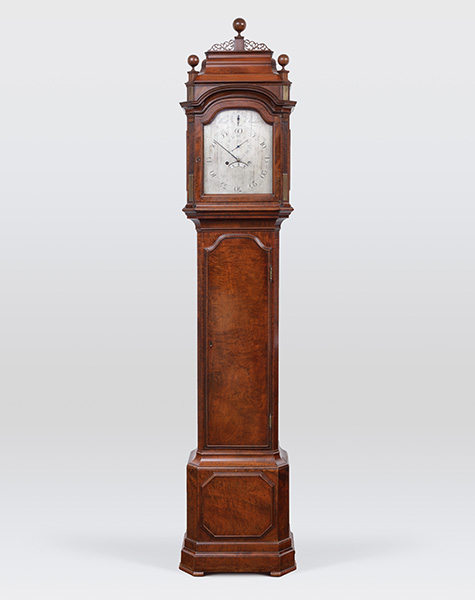
John Ellicott, London

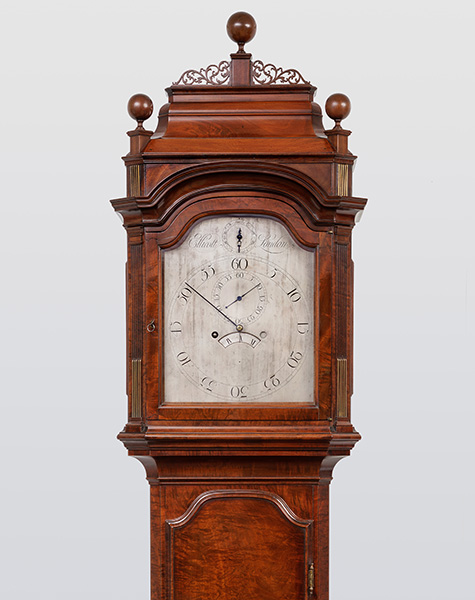
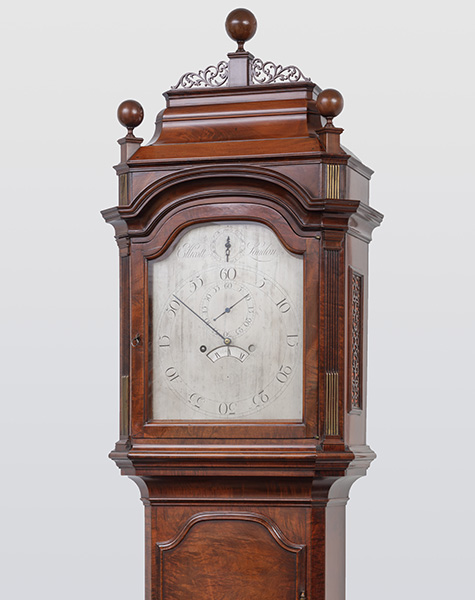
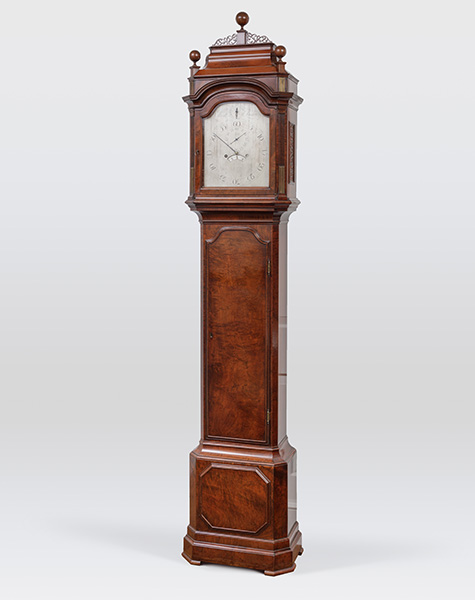
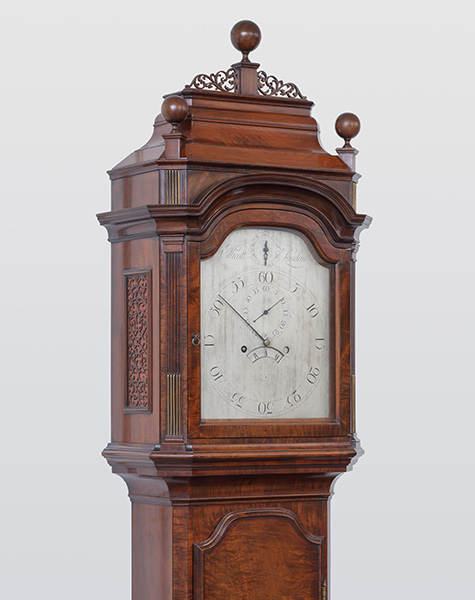
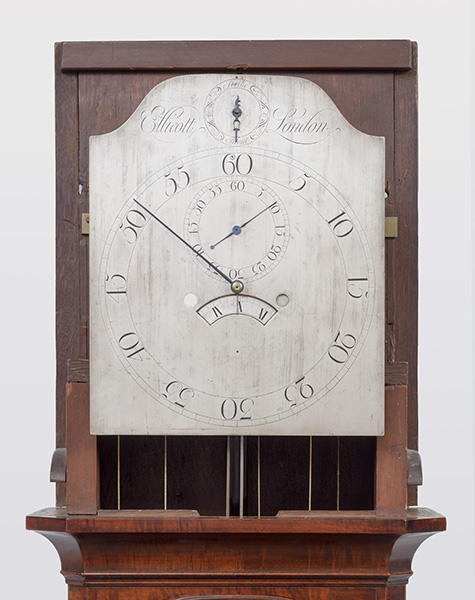
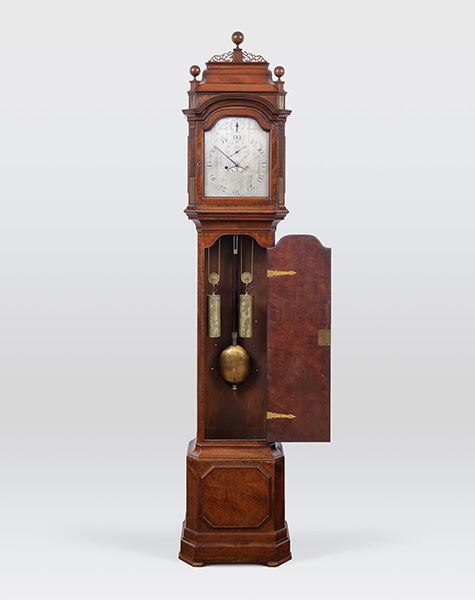
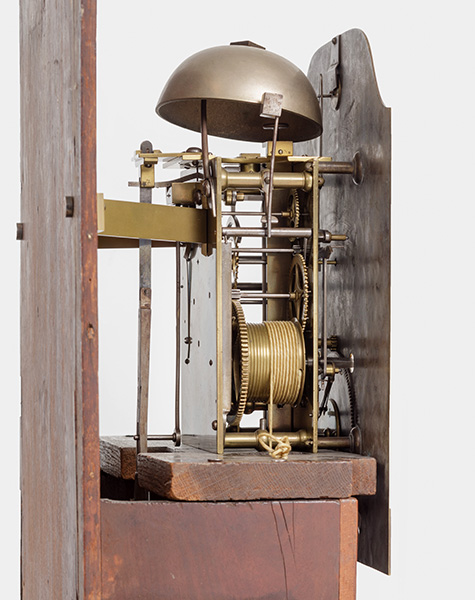
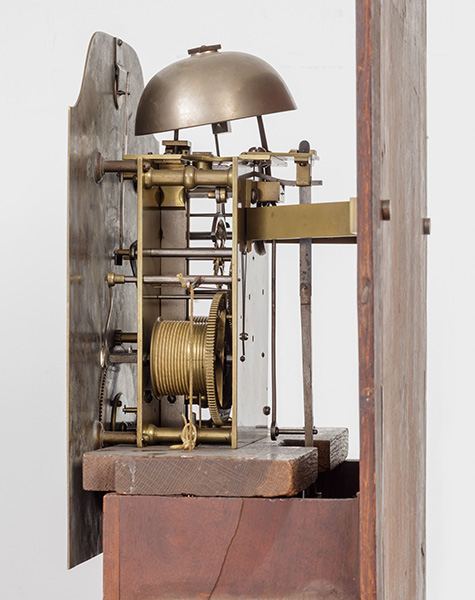
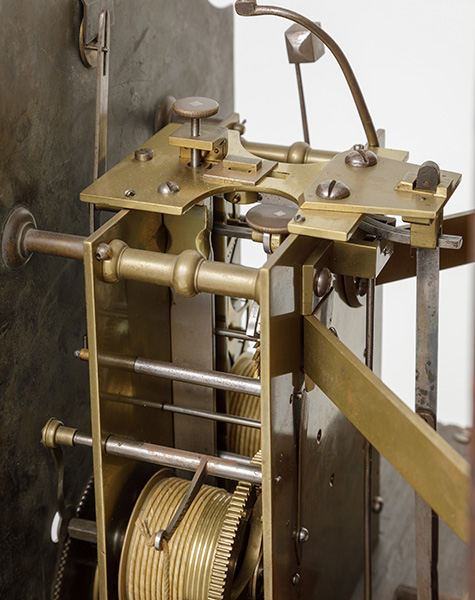
Circa 1755
Sold
7ft 5 inches high
An extremely rare mahogany striking longcase regulator. CASE The case retains the original beautifully constructed caddy top surmounted by three turned mahogany ball finials and a pierced cresting, over foliate scroll sound frets to the sides within moulded frames, the canted front angles stop-fluted in brass and with applied capitals and bases, the cornice and door frame following the shallow arch of the dial below, the beautifully figured long trunk door has the original brass hinges, the stepped base is applied with an octagonal moulded panel and the whole case is raised on a double skirt on block feet. DIAL The 11-inch one-piece silvered dial has a shallow arched top with a strike/silent dial flanked by the bold signature Ellicott, London above the minute track with large Arabic minutes enclosing a large subsidiary seconds dial with counterweighted hand and the curved Roman hour aperture MOVEMENT The very substantial movement has thick brass plates plates united by five knopped pillars, the going train with bolt and shutter maintaining power, high count pinions and deadbeat escapement, with rack strike on a bell to the strike train, the temperature compensation effected via a pair of brass and steel bars measuring approximately 18ins by half an inch and connected top and bottom, the upper part acting on a pivoted steel lever set tangentially across the plates and effectively raising or lowering the ebony rod pendulum terminating in a massive oval bob JOHN ELLICOTT (II) John Ellicott was one of the greatest clockmakers of the 18th century, he was born in 1706, died in 1772; he was the son of a a fine clockmaker of the same name. Ellicott worked from St Swithin's Alley, Royal Exchange, London where his father John (d.1733) had made his workshop when he moved from Bodmin in Cornwall in the late 17th century. John Ellicott was a brilliant and inventive man who developed his own form of gridiron temperature compensated pendulum and was instrumental in the perfection of the cylinder escapement for pocket watches. His pocket watches were of the finest quality often with complex movements and with fine enamel dials and cases embellished with decorative enamel and chatelaines. He was elected a Fellow in 1738 and in the same year offered his thoughts on a compensating pendulum to the Secretary, Mr Machin. Ellicott recorded Machin's response in the first paragraph of the paper he read when he did finally present to the Society "..that a gentleman, of whose skill and judgement in mechanical contrivances I had always entertain'd the highest opinion, made some objections, I was advised to defer communicating my invention to this Society, till I should have examined the weight of these objections, and, by a fair and impartial trial, should be fully assured, that the contrivance would answer the end proposed."
